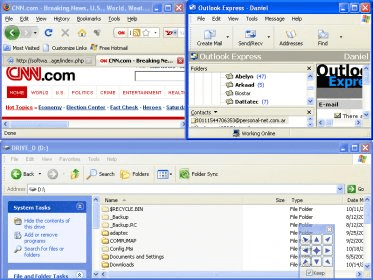Working With File Geodatabase In Qgis For Mac
The is one of the most commonly used data sources. It is composed of geographic features with the same type of geometry (point, line, or polygon) and the same set of attributes. Feature classes are discussed in the sections that follow. They can be contained within a or a geodatabase feature dataset as well as within the following structures:,.
Geodatabase feature classes You can perform geoprocessing tasks on the feature classes contained within a geodatabase feature dataset. Geodatabase feature classes store geographic features represented as points, lines, polygons, annotation, dimensions, and multipatches and their attributes. They store simple features, so they can be organized inside or outside a feature dataset but always inside a geodatabase—file, personal, or ArcSDE. Simple feature classes that are outside a feature dataset are called standalone feature classes. Feature classes that store topological features must be contained within a feature dataset to ensure a common coordinate system. In the Search tab of the ArcToolbox window, type “feature class” to locate tools that accept geodatabase feature classes as input or output.
Shapefile datasets A shapefile dataset (.shp) is stored in a folder, is composed of geographic features and their attributes, and contains one feature class. Geographic features in a shapefile can be represented with points, lines, or polygons (areas). Because shapefile datasets contain one feature class, you can use them like any other feature class. In the Search tab of the ArcToolbox window, type “feature class” to locate tools that accept shapefiles as input or output. Coverage feature classes can store a set of points, lines (arcs), polygons (areas), regions, routes, tics, links, and annotation (text). They can also have, which determines the relationships among features that are within or between feature classes.
A coverage feature class can be used as input to tools that produce a distinct output or to tools that update the attributes of the input feature class. They cannot be used by those tools that update the geometry of the input.
If you want to update the geometry of a coverage feature class, export it to a geodatabase feature class and perform updates to the geometry of the geodatabase feature class. Use the in the Conversion toolbox to convert coverage feature classes to geodatabase feature classes. In the Search tab of the ArcToolbox window, type “feature class” to locate tools that work with coverage feature classes. CAD feature classes A is a read-only, in-memory member of a.

CAD feature classes include points, polylines, polygons, multipatches, or annotation. A CAD feature class is the result of a direct file read into the memory of the objects contained within a single CAD drawing file of a specific geometric type. The feature attribute table of a CAD feature class is a virtual table composed of select read-only CAD graphic properties and any existing block or cell attribute values. Because they are read-only, CAD feature classes can only be used by geoprocessing tools that produce a distinct output. They cannot be used by tools that alter the geometry or attributes of the input feature class. To alter the geometry or attributes of a CAD feature class, export the feature class to a geodatabase feature class and perform the alteration on the geodatabase feature class. In the Search tab of the ArcToolbox window, type “feature class” to locate tools that accept CAD feature classes as input or output.
Working With File Geodatabase In Qgis For Mac Download
SDC feature classes can store a set of points, lines, and polygons. They can also have topology, which determines the relationships between features that are within or between feature classes. SDC feature classes differ in respect to other ArcGIS feature classes because they support multiple geometries for a single record. This design feature allows the storage of generalized versions of detailed geometry with only one set of attribute information.
SDC feature classes are created using ESRI’s Data Development Kit Professional (DDKP). They are composed of an SDC file that stores both geometry and data, a spatial index (SDI) file, an index descriptor (IDI) file that is a pointer to attribute indexes, and any number of attribute indexes that are defined in the IDI file.
Filename extensions for individual attribute indexes are open as long as they are correctly defined in the IDI file. SDC feature classes can only be used as input to geoprocessing tools that produce a distinct output or tools that update attributes. They cannot be used by those tools that update the geometry of the input. If you want to update the geometry of an SDC feature class, export it to a geodatabase feature class and perform updates to the geometry of the geodatabase feature class.
Working With File Geodatabase In Qgis For Mac
Use the Feature Class To Geodatabase tool in the Conversion toolbox to convert SDC feature classes into geodatabase feature classes. In the Search tab of the ArcToolbox window, type “feature class” to locate tools that work with SDC feature classes. VPF feature classes A VPF feature class is a collection of features (primitives) that have the same attributes. Each feature class contains point (node), line (edge), polygon (face), or annotation features and has an associated feature attribute table. VPF feature classes are read-only.
They can only be used by geoprocessing tools that produce a distinct output. They cannot be used by tools that alter the geometry or attributes of the input feature class. In the Search tab of the ArcToolbox window, type “feature class” to locate tools that accept VPF feature classes as input or output. If you want to alter the schema of a VPF feature class, you must export the feature class to a geodatabase feature class.
In ArcToolbox, under Conversion Tools, click the To Geodatabase toolset and use the To Geodatabase tool to convert VPF feature classes to geodatabase feature classes.
